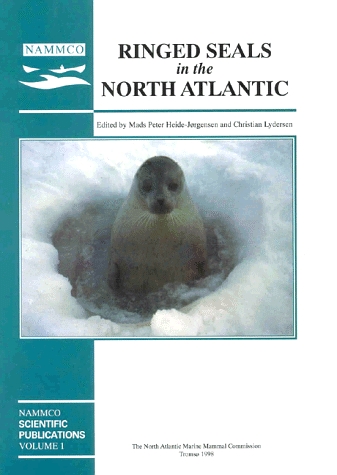Status and biology of Saimaa (Phoca hispida saimensis) and Ladoga (Phoca hispida ladogensis) ringed seals
DOI:
https://doi.org/10.7557/3.2982Keywords:
Saimaa ringed seals, Phoca hispida saimensis, Ladoga ringed seals, Phoca hispida ladogensis, ecology, reproduction, habitatAbstract
Saimaa (Phoca hispida saimensis) and Ladoga (P. h. ladogensis) seals are subspecies of ringed seals that live in freshwater lakes. The founding populations for these two subspecies became separated from Arctic ringed seals (P. h. hispida) during the last ice age. The Saimaa seal population currently numbers approximately 200 seals with 36 - 40 pups born annually. The Ladoga seal population contains at least 5,000 seals. The weight of adult animals in Lake Saimaa is 45-100 kg (mean 62 kg) and in Lake Ladoga adults weigh 32-56 kg (mean 47 kg). The lanugo of Saimaa seals is grey. Normally pups in Lake Ladoga are born with white lanugo, although some pups have been found that have black hairs in the natal pelt. Adult Saimaa seal vary a lot in colour, ranging from dark to pale animals, but all colour morphs have regular ringed patterns on the pelt. Ladoga seals are usually quite dark, with irregular, light ringed patterns. Saimaa seals are usually found hauled
out alone or in pairs along shorelines. Ladoga seals haul out in herds of up to 300 animals, and are very vocal when they are hauled out. The lairs of Saimaa seals are situated in snowdrifts adjacent to shorelines of islets, which are the only places where snow piles up in Lake Saimaa. Most Ladoga seal lairs are situated near hummocked or ridged ice along the shoreline of the lake, but some lairs are also found along the shorelines of islets in northern Lake Ladoga. Saimaa seals are an endangered population. The main threats to these seals are fisheries conducted using nets and destruction of breeding habitat. The Ladoga seal is vulnerable, and it also is threatened by fishing. Mercury in both lakes presents an anthropogenic risk factor, but present levels probably do not affect the breeding of either seal population.





